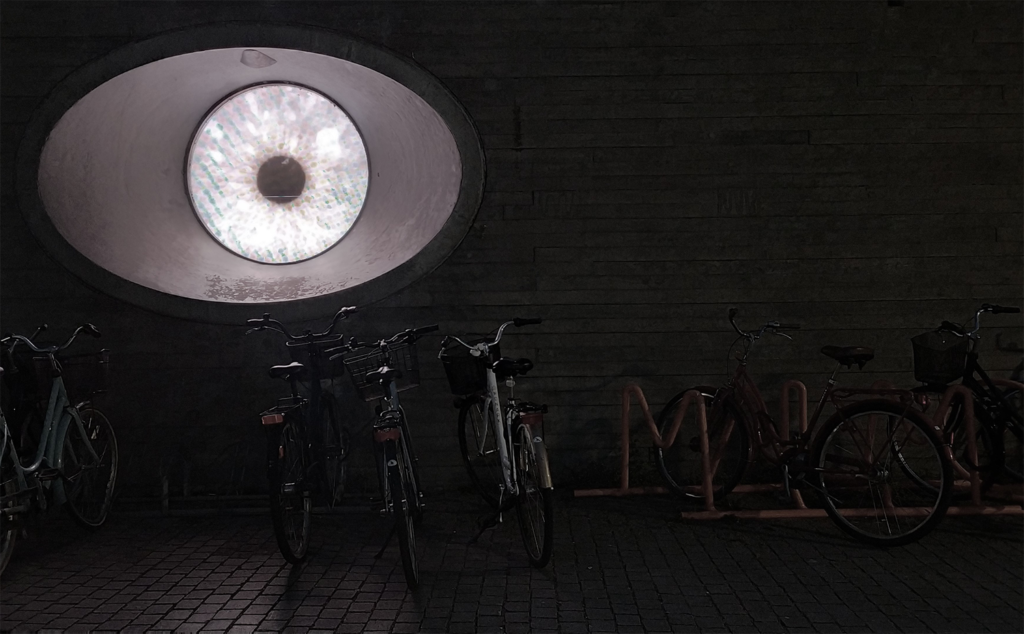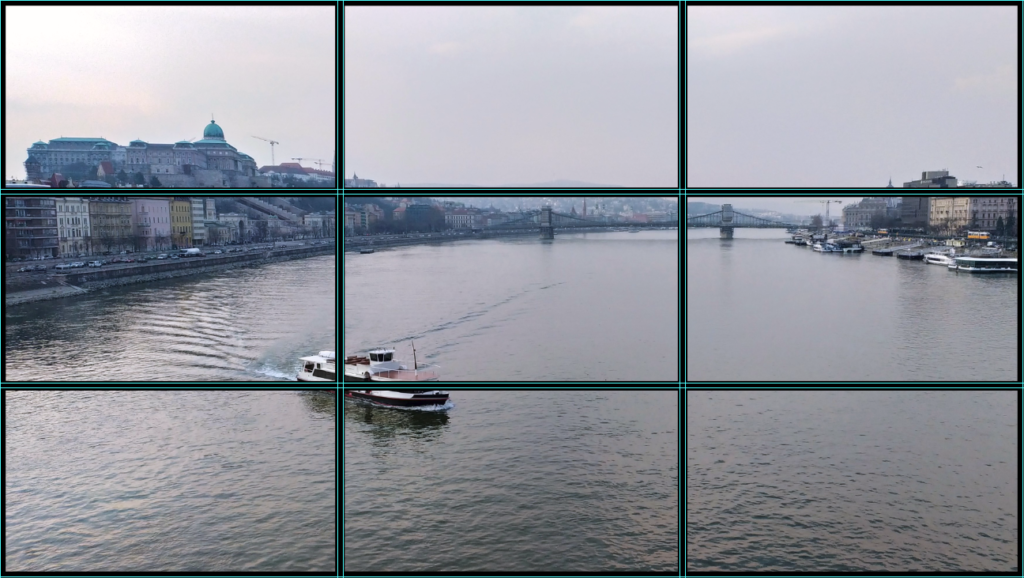Documentary cinema is a type of art but it also speaks with a voice of reality which contains divers colors. And the youth work is a way to try solving problems of young people through giving them competences. Combining youth work and the documentary film is a good way to bring more attention on youth problems, to raise awareness about the rights and opportunities and to share a culture of a group or an individual that they want the world to see.
My first tries in this field were in 2008 when I, as a member of World Independent Youth Union NGO and as a film directing student, made a 3 part interactive 20 minute documentary film on people who faced a discrimination in Armenia. Later it was used to make debate series in Armenian schools with support of the European Youth Foundation and in frames of the Youth Peace Ambassadors project (2 year course) by the Council of Europe. It was my way to become a trainer.
Later it became my aim to let youth workers know about the potential power of the documentary art to be used in the emotional education.
The first large-scale try was the Erasmus+ training course in Armenia called “MovieDoc” (2017) aimed to make a space for youth workers and people with autism to work together using documentary filmmaking as a tool of communication and dialogue. It was organized by “Foreign Students of Luxembourg”, Co-hosted by Doctor Cinema and financed by Erasmus+ National agency of Luxembourg: Service National de Jeunesse. Participants were from Luxembourg, France, Greece, Portugal, Georgia, Belarus, Russia, Armenia. For the youth workers it was a possibility to gain experience in a safe environment and to use it later in their communities. For the young people with autism it was a safe learning and communication space. The overall training mood and the feedback that we got from the group after the project was motivating for our team and in 2018 the idea came back to life again in different form.
The project “DocuSpeech Against Hate Speech” was consist of a Training Course in Luxembourg and a Seminar in Armenia. It organized by Foreign Students of Luxembourg, Co-hosted by Doctor Cinema with a financial support of Erasmus+ Programme granted by Luxembourgish National Agency – Anefore. The aim of the project was to empower youth workers from Luxembourg, Norway, Poland, Portugal, Georgia, Russia, Armenia with the skills of documentary filmmaking and using their films in their own projects. Participants created 5 session outlines about the topics of discrimination, disability, media literacy, critical thinking and Love Speech using the videos they’ve created n frames of the project. 4 session outlines are published in the Salto-Youth website and the links are below.
https://www.salto-youth.net/tools/toolbox/tool/love-speech-for-a-world-without-hate.2607/
https://www.salto-youth.net/tools/toolbox/tool/workshop-on-critical-thinking.2606/
https://www.salto-youth.net/tools/toolbox/tool/check-the-fake.2608/
https://www.salto-youth.net/tools/toolbox/tool/not-just-words.2553/
The positive resonance among participants of the previous experiences not only made us to feel the importance of the topic but also the Norvegian Erasmus+ National Agency Aktiv Ungdom, which supported the realization of the project “DocuRights”. It was organized by Frie Filmere NGO and hosted by Doctor Cinema in Armenia. The aim was to promote usage of international documentary movies in youth work as tool of emotional education.
https://www.facebook.com/DocCinema/videos/657542984654679/?__xts__[0]=68.ARAqdKmDfppMOYD-MH1qbEvnGUkv83tZy_Fj3SW184GI7BbNbpcZ5pbtPNdbiA-IPf8l8d5-qqHPMGcE2klrYu7Ay8D11ye3sQyKBwe2uCwTFxRWtfN9IpeUp4fGoiH1esh9G3_HtYN_yGtgw9zM8nIekaftdOSWIn_ocEaFvVhPGhEeuYQnFGMTPhJ-zpBxctBevnqnebLX2bGd6ZNV9-FyLAIXyCK5tzUztpFt-bLsT4Ps9gyecB6PceHTSXY9OvQatljlmYZ4rEbZnK_zwYVpbUxsEtsFd2nfx8efXxhPdPpwy9SVxwvw4azU5fh45ErfQB9Y5bkX-wlhzz5lrFbTOuYZ6_w7cvxoFg&__tn__=-R
The practice showed that the long-term involvement of participants creates an additional motivation for learning so we plan to continue promoting the usage of documentary films in youth work as a tool for dialogue, emotional learning tool, co-working space, a way to raise a voice and an intellectual entertainment.
P.S. I am grateful to Foreign Students of Luxembourg, Amities Luxembourg Armenie, Frie Filmere for their trust and support to me as a trainer, to the National Agencies of Erasmus+ in Luxembourg (Anefore, Service National de Jeunesse) and in Norway (Aktiv Ungdom) for believing in our projects, and to my colleagues who give me lots of energy to go on.




















![[:en]MovieDoc1[:] MovieDoc1](https://segkirakossian.com/wp-content/uploads/2019/12/18527493_618833684974083_2376181257795983698_o_618833684974083-215x143.jpg)
![[:en]MovieDoc2[:] MovieDoc2](https://segkirakossian.com/wp-content/uploads/2019/12/18595369_618832768307508_558489671115809788_o_618832768307508-215x129.jpg)
![[:en]MovieDoc3[:] MovieDoc3](https://segkirakossian.com/wp-content/uploads/2019/12/18491602_618833301640788_695727652194389483_o_618833301640788-215x143.jpg)
![[:en]MovieDoc4[:] MovieDoc4](https://segkirakossian.com/wp-content/uploads/2019/12/18588699_619020804955371_2301869855713705192_o_619020804955371-215x143.jpg)
![[:en]MovieDoc5[:] MovieDoc5](https://segkirakossian.com/wp-content/uploads/2019/12/18588834_618833224974129_1706146866949415958_o_618833224974129-215x143.jpg)
![[:en]MovieDoc6[:] MovieDoc6](https://segkirakossian.com/wp-content/uploads/2019/12/18558737_618834128307372_3683517189667768653_o_618834128307372-215x143.jpg)
![[:en]MovieDoc7[:] MovieDoc7](https://segkirakossian.com/wp-content/uploads/2019/12/18588838_619017528289032_7191441577708402624_o_619017528289032-215x137.jpg)
![[:en]MovieDoc9[:] MovieDoc9](https://segkirakossian.com/wp-content/uploads/2019/12/18588688_619020698288715_8407152945466332683_o_619020698288715-215x143.jpg)
![[:en]MovieDoc12[:] MovieDoc12](https://segkirakossian.com/wp-content/uploads/2019/12/18558623_618836551640463_7848377345402986998_o_618836551640463-215x143.jpg)
![[:en]MovieDoc14[:] MovieDoc14](https://segkirakossian.com/wp-content/uploads/2019/12/18556705_618834851640633_5596987315929108888_o_618834851640633-215x143.jpg)
![[:en]MovieDoc15[:] MovieDoc15](https://segkirakossian.com/wp-content/uploads/2019/12/18556672_618834364974015_7311083580206565336_o_618834364974015-215x143.jpg)
![[:en]MovieDoc30[:] MovieDoc30](https://segkirakossian.com/wp-content/uploads/2019/12/18491575_618833424974109_386185094148959278_o_618833424974109-215x143.jpg)
![[:en]MovieDoc16[:] MovieDoc16](https://segkirakossian.com/wp-content/uploads/2019/12/18519830_619020638288721_7023623427020123906_n_619020638288721-215x161.jpg)
![[:en]MovieDoc17[:] MovieDoc17](https://segkirakossian.com/wp-content/uploads/2019/12/18555988_619020684955383_1628000779926229756_n_619020684955383-215x382.jpg)
![[:en]MovieDoc18[:] MovieDoc18](https://segkirakossian.com/wp-content/uploads/2019/12/18489944_618833548307430_2531697035663252151_o_618833548307430-215x143.jpg)
![[:en]MovieDoc19[:] MovieDoc19](https://segkirakossian.com/wp-content/uploads/2019/12/18527509_618833841640734_1314629687088753023_o_618833841640734-215x143.jpg)
![[:en]MovieDoc29[:] MovieDoc29](https://segkirakossian.com/wp-content/uploads/2019/12/18489730_618832701640848_8686064952221125457_o_618832701640848-215x161.jpg)
![[:en]MovieDoc20[:] MovieDoc20](https://segkirakossian.com/wp-content/uploads/2019/12/18491385_618832818307503_7847884914582411032_o_618832818307503-215x143.jpg)
![[:en]MovieDoc22[:] MovieDoc22](https://segkirakossian.com/wp-content/uploads/2019/12/18518074_619017668289018_5788298721896055948_o_619017668289018-215x143.jpg)
![[:en]MovieDoc24[:] MovieDoc24](https://segkirakossian.com/wp-content/uploads/2019/12/18491783_619017834955668_1372677514674136805_o_619017834955668-215x143.jpg)
![[:en]MovieDoc11[:] MovieDoc11](https://segkirakossian.com/wp-content/uploads/2019/12/18588943_619017761622342_2379023257691486966_o_619017761622342-215x143.jpg)
![[:en]MovieDoc26[:] MovieDoc26](https://segkirakossian.com/wp-content/uploads/2019/12/18491410_618833001640818_5432481954272350453_o_618833001640818-215x143.jpg)
![[:en]MovieDoc27[:] MovieDoc27](https://segkirakossian.com/wp-content/uploads/2019/12/18491740_618838354973616_5604136909133685548_o_618838354973616-215x143.jpg)
![[:en]MovieDoc28[:] MovieDoc28](https://segkirakossian.com/wp-content/uploads/2019/12/18489926_618833094974142_4142730597141491572_o_618833094974142-215x143.jpg)
![[:en]MovieDoc31[:] MovieDoc31](https://segkirakossian.com/wp-content/uploads/2019/12/18518383_619017671622351_6332868032936829440_o_619017671622351-215x143.jpg)
![[:en]MovieDoc10[:] MovieDoc10](https://segkirakossian.com/wp-content/uploads/2019/12/18558854_619018478288937_5314119929062408700_o_619018478288937-215x143.jpg)
![[:en]MovieDoc25[:] MovieDoc25](https://segkirakossian.com/wp-content/uploads/2019/12/18556450_619018544955597_7128623905279947057_o_619018544955597-215x143.jpg)
![[:en]MovieDoc21[:] MovieDoc21](https://segkirakossian.com/wp-content/uploads/2019/12/18527167_618833628307422_1775920804676191579_o_618833628307422-215x143.jpg)